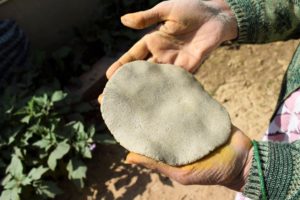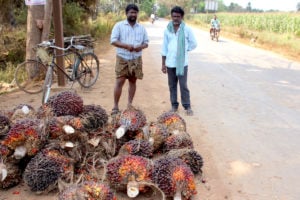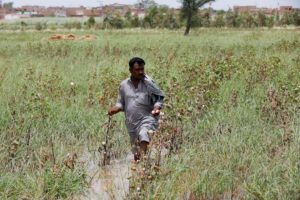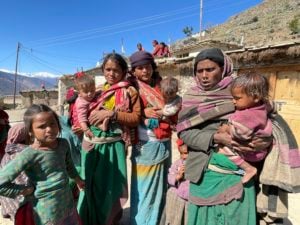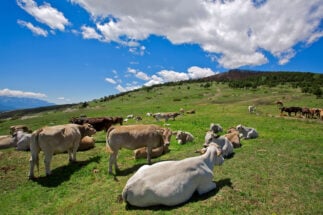The Indian government is making a significant effort to raise the profile of millet, an under-consumed, climate-resilient crop, both at home and via Indian embassies across the world.
That effort is being recognised globally: in January, after a proposal from India, the United Nations General Assembly declared 2023 as the International Year of Millets. In June, a marinated millet salad made it onto the menu of the White House state dinner for Indian prime minister Narendra Modi, while millets were served at every G20 meeting held in India this year.
Millet is a small grain grown mostly in Asia and Africa for cattle fodder and human consumption.
It has been eaten by humans for thousands of years. The most commonly cultivated type is pearl millet, followed by finger millet, proso millet, foxtail millet and barnyard millet.
The push to promote millet began in 2018, which India declared a National Year of Millets. That year, the country rebranded the grain as a ‘nutri-cereal’ for its higher nutrient content relative to wheat and rice, two popular national – and global – staples.
But despite the government’s promotion of millet as a superfood of the future, experts say that demand remains low, and that in the face of more frequent weather extremes, much more has to be done to ensure that the drought-resistant crop is produced and consumed in higher quantities than it is today.
From staple to unpopular crop
Prior to the 1960s, millet was a staple in the Indian diet. Devinder Sharma, an agriculture policy analyst, traces the roots of today’s low demand for millet back to India’s Green Revolution beginning in the 1960s, during which technology was widely adopted in the country’s agriculture practices. “Many farmers switched to growing high-yield hybrid varieties of wheat, maize, rice and other crops,” says Sharma.
C Tara Satyavathi, director of the Indian Institute of Millets Research, explains that “since India wasn’t food-secure at the time of independence [in 1947], to achieve food security, the government prioritised and supported the cultivation of wheat and rice.”
Between 1960 and 2022, the annual per capita consumption of millet in India fell from 30.94 kg to 3.87 kg, as people increasingly consumed wheat and rice.
Some attribute low demand for the grain to the fact that many, mostly younger, Indians find the taste and texture of millet unappealing compared to wheat and white rice. Others blame India’s Public Distribution System (PDS) scheme, which provides eligible financially disadvantaged citizens with free rice or wheat every month, for perpetuating “rice-wheat centric policies” that have led to a preference for those grains. (About six in 10 Indians consume free grain distributed through this system.)
Despite packing a host of health benefits such as antioxidants and prebiotics that help to improve gut health, according to Satyavathi, “millet had even fewer takers until the coronavirus pandemic put the spotlight on immunity-boosting foods”. But despite that short-term boost in popularity, overall demand for the grain remains low.
Withstanding impacts of climate change
Studies have shown there is a “substantial possibility” that global temperatures will increase by 2 degrees Celsius over the course of the 21st century. Drought and heatwaves are two extreme climate events that are certain to occur with greater frequency as a result of global warming.
In the face of such climate uncertainty, low-input, sustainable agriculture has been increasingly sought as a means of ensuring food security.
For many farmers, millet scores high on that count. It is a “low-investment” crop that is rainfed and barely needs inputs such as pesticide and fertiliser, notes Vijay Jardhar, a farmer in his seventies who has grown the crop on an acre of land in a village in Uttarakhand, northern India, for 30 years.
There is ample research to show that millet, a cereal native to India, South-east Asia and parts of Africa, is a hardy crop that can withstand hot weather extremes. Pearl millet, which accounts for almost half of the world’s millet production, has a deep root system that allows it to survive droughts, according to a recent study.
“Even if the plant [millet] shrivels during a drought, it retains the capacity to rebound as it is watered, making it an ideal crop for situations such as a delayed monsoon,” Shalander Kumar, principal scientist and agricultural economist at the International Crops Research Institute for the Semi-Arid Tropics (ICRISAT), tells The Third Pole.
A 2023 simulation study that developed a framework to assess the climate sensitivity of underutilised crops showed that, even with the hotter climate brought on by a 2C increase in temperature, yields of the drought-resistant proso millet would, in fact, increase by 5% with higher levels of rainfall.
A path to increasing millet supply?
Unlike wheat and rice, millet thrives in drier areas and hilly terrain where water drains rapidly. One such place is Uttarakhand – a hilly, landlocked state in the Himalayas whose economy is dominated by agriculture and tourism. A key grower of millet in India, it produced 7% of the country’s finger millet and 20% of small millet in 2020-2021.
Dinesh Kumar, joint director of agriculture (planning) at the Uttarakhand Government Agriculture Department, says that this is down to the state’s hilly terrain, and the fact that “about 89% of our area [Uttarakhand] isn’t irrigated, nor does it receive sufficient rainfall to grow paddy.”
Despite such geographic and climatic advantages, however, millet cultivation in Uttarakhand fell by 25% between 2012 and 2020. Dinesh Kumar attributes the continued aversion among farmers to growing millet partly to “insufficient demand [and hence return] for their traditional [millet] produce.”
To give millet a boost, Uttarakhand introduced a minimum support price (MSP) for the crop in 2022 and, earlier this year, launched the State Millet Mission to boost the demand and supply of millets. This included a four-day festival to educate interested famers about the benefits of the crop.
An MSP guarantees a certain level of income to farmers for their crop. If the government-set price is higher than prevailing market rates, the prospect of a higher return encourages farmers to grow the crop.
Last year’s minimum support price was INR 35.78 (USD 0.43) per kg of finger millet, which was well above the regular INR 25-27 per kg market rate, says Dinesh Kumar.
This year, the government will be offering INR 38.46 (USD 0.46) per kg, he adds. This is against the market rate of INR 30 per kg, according to Vinay Kumar, managing director of the Uttarakhand Organic Commodity Board.
Additionally, this year, the government of Uttarakhand increased the central government-sponsored subsidy on millet seeds from 50% to 75%, in hopes of encouraging farmers to cultivate the crop.
Continued challenges for millet in India
It is unclear whether these incentives are enough to restore millet farming to pre-Green Revolution levels. Despite an increase in the 2023-2024 MSP of the crop, millet farmers still receive much less return over cost when cultivating pearl and finger millet compared to wheat, as well as rapeseed and mustard (at 40% and 12%, compared to 100% and 104% respectively), making the crop relatively unprofitable for them.
This could explain why, as Shalander Kumar notes, millet has largely been grown in marginal (low-value) waste land and hilly areas where other staples do not thrive. “If the millet yield is to be increased, we will have to start growing it in the best land available, which is usually allocated to competitor crops such as maize, cotton, soya beans and legumes,” he says.
But before the issue of supply is dealt with, above all, appetite for millet needs to return for the crop to be attractive to farmers. Jardhar believes that to sustain demand for the grain in the long run, a fundamental shift in the country’s diet is necessary.
“We need to go back to our old food habits… What’s the point of earning more through a minimum support price but continuing to eat rice and wheat?” he asks.
